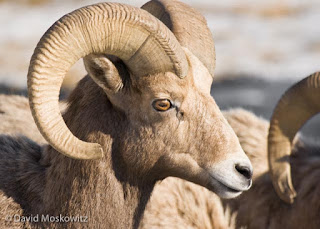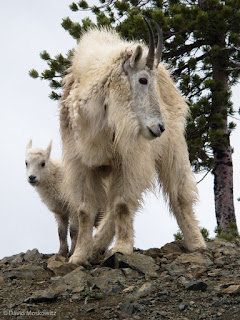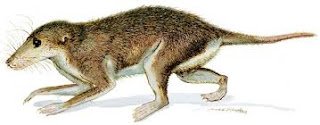Class #1
Class #2
Class #3
Class #4
Class #5
Learn more about the Mammal Course and see all the course documents here.
Class #6 - Insectivores with Dr. Peter Wimberger, plus The 10 Decades Project with Kent Woodruff.
(Watch and listen to Peter Wimberger's section here)
If you are a mammal in the Methow, the chances are very likely that you are a rodent. If you are not a rodent, but still call yourself a mammal, then it’s likely you are a shrew, mole or bat. Rodents are the largest order of mammals. Shrews, moles and bats are in the second and third largest families of mammals. “Insectivora” is a now-abandoned taxonomic order. Insectivores are the sister group to all the rest of mammals. It wasn’t until the 1990s, when we started sequencing DNA, that biologists realized not all those groups fit together. Now, there are new orders, and “super-orders” and new families and “sub-families,” all trying to distinguish how mammals are similar/related or not, and the classifications continuing changing today. For now, true shrews and moles are in the order Eulipotyphla, and bats are in the order Chiroptera.
Shrews
The family Soricidae, the “shrew” family, has 26 genera and 376 species worldwide! The only places shrews are not found are Australia, New Zealand and Papua New Guinea. Shrews are all small mammals found in forests, and most of them primarily make their living off of eating insects. They are carnivorous, but they also eat subterranean fungi. Shrews have many sharp teeth, but lack a zygomatic arch, which rodents have. Unlike rodents whose teeth are constantly growing, shrews only have one set of teeth. However, like beavers, some shrews have iron capped teeth which reinforce the tooth and make them stronger. Like bats, shrews can echolocate. They are mostly solitary, but very territorial (for fun, google: “shrew territorial battle!” It will make cage fighting look tame!). Shrews burrow, but they also spend a lot of time above ground. Shrews have a short lifespan of about one year, and can have up to 10 litters per year. A few other interesting facts about shrews: they have venomous saliva, and also can engage in seismic body shaking in order to figure out where to burrow. Being small has its disadvantages when it comes to being homoeothermic (warm-blooded) in a cooler climate. In colder climates, shrews have to eat 1.5-3x their body weight in food/day. They take several very short naps during the day, but they don’t go into torpor or hibernate.
In the Methow, we have the masked shrew (Sorex cinereus) and vagrant shrew (Sorex vagrans) for sure, and it’s likely we also have Montane (dusky) shrew (Sorex monticolus (obscurus)) and water shrew (Sorex palustris). The masked shrew has the widest distribution range of any North American shrew and can be found in a variety of habitats. Water shrews live in water and make their living by eating lots of aquatic fish and amphibian larvae. Water shrews have hairs around the edges of their feet which makes them more efficient swimmers. They can control their metabolic rate a little bit more efficiently than other shrews.
Moles
Moles are in the Talpidae family. There are 17 genera and 50 species of moles world-wide. They spend much of their lives in underground burrows, so they’ve evolved a special ability to survive in low-oxygen environments. Their blood cells have a special form of hemoglobin that allows them to reuse oxygen.
Moles have a fused radius and humerus, and a huge pectoralis, all allowing them to dig efficiently and for long periods of time. Moles do have a zygomatic arch and like birds, they have a keeled sternum, which makes sense given the sweeping or swimming motion their front arms make. Mole saliva has a paralyzing toxin that allows them to store their still-living prey (primarily earthworms) for later consumption.
Pacific Moles, also known as Coast Moles (Scapanus orarius), live on the west side of the Cascades throughout the Northwest, but their mounds and sign have been found in the Methow by David Moskowitz, and records show that they’ve been seen to reach some parts of west-central Idaho. They stick to wetter riparian areas, and their mounds look different from gopher mounds (moles are more like volcanos with hole going straight down the middle; gophers are large nondescript piles and a hole may be found anywhere in it, curving down a side.
Bats
Shrews
 |
| Vagrant Shrew (by William Leonard) |
The family Soricidae, the “shrew” family, has 26 genera and 376 species worldwide! The only places shrews are not found are Australia, New Zealand and Papua New Guinea. Shrews are all small mammals found in forests, and most of them primarily make their living off of eating insects. They are carnivorous, but they also eat subterranean fungi. Shrews have many sharp teeth, but lack a zygomatic arch, which rodents have. Unlike rodents whose teeth are constantly growing, shrews only have one set of teeth. However, like beavers, some shrews have iron capped teeth which reinforce the tooth and make them stronger. Like bats, shrews can echolocate. They are mostly solitary, but very territorial (for fun, google: “shrew territorial battle!” It will make cage fighting look tame!). Shrews burrow, but they also spend a lot of time above ground. Shrews have a short lifespan of about one year, and can have up to 10 litters per year. A few other interesting facts about shrews: they have venomous saliva, and also can engage in seismic body shaking in order to figure out where to burrow. Being small has its disadvantages when it comes to being homoeothermic (warm-blooded) in a cooler climate. In colder climates, shrews have to eat 1.5-3x their body weight in food/day. They take several very short naps during the day, but they don’t go into torpor or hibernate.
In the Methow, we have the masked shrew (Sorex cinereus) and vagrant shrew (Sorex vagrans) for sure, and it’s likely we also have Montane (dusky) shrew (Sorex monticolus (obscurus)) and water shrew (Sorex palustris). The masked shrew has the widest distribution range of any North American shrew and can be found in a variety of habitats. Water shrews live in water and make their living by eating lots of aquatic fish and amphibian larvae. Water shrews have hairs around the edges of their feet which makes them more efficient swimmers. They can control their metabolic rate a little bit more efficiently than other shrews.
Moles
 |
| Coast Mole (by Peter Paquet) |
Moles are in the Talpidae family. There are 17 genera and 50 species of moles world-wide. They spend much of their lives in underground burrows, so they’ve evolved a special ability to survive in low-oxygen environments. Their blood cells have a special form of hemoglobin that allows them to reuse oxygen.
Moles have a fused radius and humerus, and a huge pectoralis, all allowing them to dig efficiently and for long periods of time. Moles do have a zygomatic arch and like birds, they have a keeled sternum, which makes sense given the sweeping or swimming motion their front arms make. Mole saliva has a paralyzing toxin that allows them to store their still-living prey (primarily earthworms) for later consumption.
Pacific Moles, also known as Coast Moles (Scapanus orarius), live on the west side of the Cascades throughout the Northwest, but their mounds and sign have been found in the Methow by David Moskowitz, and records show that they’ve been seen to reach some parts of west-central Idaho. They stick to wetter riparian areas, and their mounds look different from gopher mounds (moles are more like volcanos with hole going straight down the middle; gophers are large nondescript piles and a hole may be found anywhere in it, curving down a side.
 |
| Townsend's big-eared bats in Twisp by Mary Kiesau |
Bats, in the order Chiroptera (meaning hand-wing) are the only true flying mammal. Bats are the second largest order of mammals (after the rodents), representing about 20% of all classified mammal species worldwide (there about 1200 species of bats). Bats showed up soon after the dinosaurs went extinct. Fossil records go back to the early Eocene period, (52-53mya).
Bats have the broadest array of feeding niches of any animal. Different bats eat different things; nectar, pollen, fish, frogs, blood, fruits, frogs, birds, and more. Bats have a wide array of teeth based on their diets.
The aspect ratio is the length to width ratio of the wing. Bats with shorter/broader wings are very maneuverable with a low aspect ratio wing. Also, like birds, some bats migrate. It was recently discovered that some bats who migrate use the same migratory paths that birds do. Bats have a higher concentration of red blood cells than other mammals in order to supply them with the energy they need for flying. Most bats utilize echolocation for navigation and feeding. Some bats estivate and some bats hibernate or go into torpor for a single night.
Flight lowers the probability of an early extrinsic death and so they generally can live a long time - many up to 30 years. If a species has a high probability of dying young, they will generally reproduce very quickly (like rodents). Bats reproduce very slowly, because of the reduced selection pressure on their lifespan (this is also a contributing factor to bats’ population decline). Mating occurs in late summer/early fall and the female stores the male sperm until April or May the following year. Once implantation is allowed, gestation is 30-60 days depending on the species. Generally, bats have 1 young, sometimes 2.
When it comes to echo-location, most bats generate sound with their larynx and their tongue in the 20-70kHz range. Our hearing range is between 20Hz-20KHz, so we usually can’t hear them. Some bats can generate calls up to 210 KHz. Many of the bat species in the Methow are in the myotis genus, and they have the ability to avoid a wire as thin as .28 mm by using echolocation. Others can avoid a wire .05 mm (the size of an amoeba!).
The most common bat, the “little brown bat” (Myotis lucifugus), is the bat that has been most devastated by the white nose syndrome. The “big brown bat” (Eptesicus fuscus) is widely distributed and uses human structures to build their habitat. Townsend’s big-eared bats (Corynorhinus townsendii) feed primarily on moths and have very low intensity sounds so that the moths can’t hear them coming, giving this bat the common name of “whisper bat.” Hoary bats (Lasiurus cinereus) have high aspect ratio wings and can endure long migrations. Pallid bats (Antrozous pallidus) are WA’s second largest bat. They like our arid river canyons and cliffs, and shrub-steppe where they forage on crickets. Spotted bats (Euderma maculatum) are considered one of America’s rarest animals. There are only 73 museum specimens in the world. We do have them in the valley - listen for them in Pipestone canyon at night; if you hear “tick, tick, tick, tick, tick” it’s probably a spotted bat.
Up until white nose syndrome, wind turbines were the biggest threat to bats. Bats often get hit by them, or the negative pressure can make it impossible to escape getting sucked into them. Wind farms kill between 600K-900K bats/year! Solutions proposed are to have the wind turbines only running during the day, but this solution is voluntary. Pesticides reduce food sources for bats, and a lot of pesticides are fat soluble and so the fatty tissues in bats gets an accumulation which can be lethal. If you want to help bats, leave dead trees standing to give them roosting cavities. White nosed syndrome is a fungal infection that grows on the face and wings. First discovered in 2006 in the Northeast, it is now in 29 states mostly found on the eastern side of the United States, but WA has also had one case. There have been over 11 million bats killed due to this deleterious fungal infection. The spores are highly resistant, and are passed by contact including, it was discovered, by bat researchers and spelunkers (people exploring caves) who get the fungal spores on their clothes and then go to another cave. (Throw clothes away if you go spelunking; washing doesn’t destroy the spores.)
The 10 Decades Project & “One Stick at a Time”
Kent Woodruff spoke about The 10 Decades Project which was conceived in 2014 as an attempt to engage resource managers and community leaders in actions directly related to reducing the climate change impacts expected for their areas. The main effort is to communicate that excellent work has been done to identify some of the specific climate change impacts that are here now and are arriving with increasing frequency, and demonstrate a few ways people in the Methow Valley are responding. The film “One Stick at a Time” was created for people that care about land and water and wildlife and fish and forests and people. The project is focused on showing that we have our work cut out for us and we need to start now to retain, for as long as we can, the things we value ... hopefully for 10 Decades or more. Kent asked questions and encouraged each of us for doing something to shape the future we want. What is one thing you have done to lessen climate change impacts?
Bats have the broadest array of feeding niches of any animal. Different bats eat different things; nectar, pollen, fish, frogs, blood, fruits, frogs, birds, and more. Bats have a wide array of teeth based on their diets.
The aspect ratio is the length to width ratio of the wing. Bats with shorter/broader wings are very maneuverable with a low aspect ratio wing. Also, like birds, some bats migrate. It was recently discovered that some bats who migrate use the same migratory paths that birds do. Bats have a higher concentration of red blood cells than other mammals in order to supply them with the energy they need for flying. Most bats utilize echolocation for navigation and feeding. Some bats estivate and some bats hibernate or go into torpor for a single night.
Flight lowers the probability of an early extrinsic death and so they generally can live a long time - many up to 30 years. If a species has a high probability of dying young, they will generally reproduce very quickly (like rodents). Bats reproduce very slowly, because of the reduced selection pressure on their lifespan (this is also a contributing factor to bats’ population decline). Mating occurs in late summer/early fall and the female stores the male sperm until April or May the following year. Once implantation is allowed, gestation is 30-60 days depending on the species. Generally, bats have 1 young, sometimes 2.
When it comes to echo-location, most bats generate sound with their larynx and their tongue in the 20-70kHz range. Our hearing range is between 20Hz-20KHz, so we usually can’t hear them. Some bats can generate calls up to 210 KHz. Many of the bat species in the Methow are in the myotis genus, and they have the ability to avoid a wire as thin as .28 mm by using echolocation. Others can avoid a wire .05 mm (the size of an amoeba!).
 |
| Pallid bat wingspan (NPS photo) |
Up until white nose syndrome, wind turbines were the biggest threat to bats. Bats often get hit by them, or the negative pressure can make it impossible to escape getting sucked into them. Wind farms kill between 600K-900K bats/year! Solutions proposed are to have the wind turbines only running during the day, but this solution is voluntary. Pesticides reduce food sources for bats, and a lot of pesticides are fat soluble and so the fatty tissues in bats gets an accumulation which can be lethal. If you want to help bats, leave dead trees standing to give them roosting cavities. White nosed syndrome is a fungal infection that grows on the face and wings. First discovered in 2006 in the Northeast, it is now in 29 states mostly found on the eastern side of the United States, but WA has also had one case. There have been over 11 million bats killed due to this deleterious fungal infection. The spores are highly resistant, and are passed by contact including, it was discovered, by bat researchers and spelunkers (people exploring caves) who get the fungal spores on their clothes and then go to another cave. (Throw clothes away if you go spelunking; washing doesn’t destroy the spores.)
The 10 Decades Project & “One Stick at a Time”
Kent Woodruff spoke about The 10 Decades Project which was conceived in 2014 as an attempt to engage resource managers and community leaders in actions directly related to reducing the climate change impacts expected for their areas. The main effort is to communicate that excellent work has been done to identify some of the specific climate change impacts that are here now and are arriving with increasing frequency, and demonstrate a few ways people in the Methow Valley are responding. The film “One Stick at a Time” was created for people that care about land and water and wildlife and fish and forests and people. The project is focused on showing that we have our work cut out for us and we need to start now to retain, for as long as we can, the things we value ... hopefully for 10 Decades or more. Kent asked questions and encouraged each of us for doing something to shape the future we want. What is one thing you have done to lessen climate change impacts?
The film “One Stick at a Time” (25 min)

































